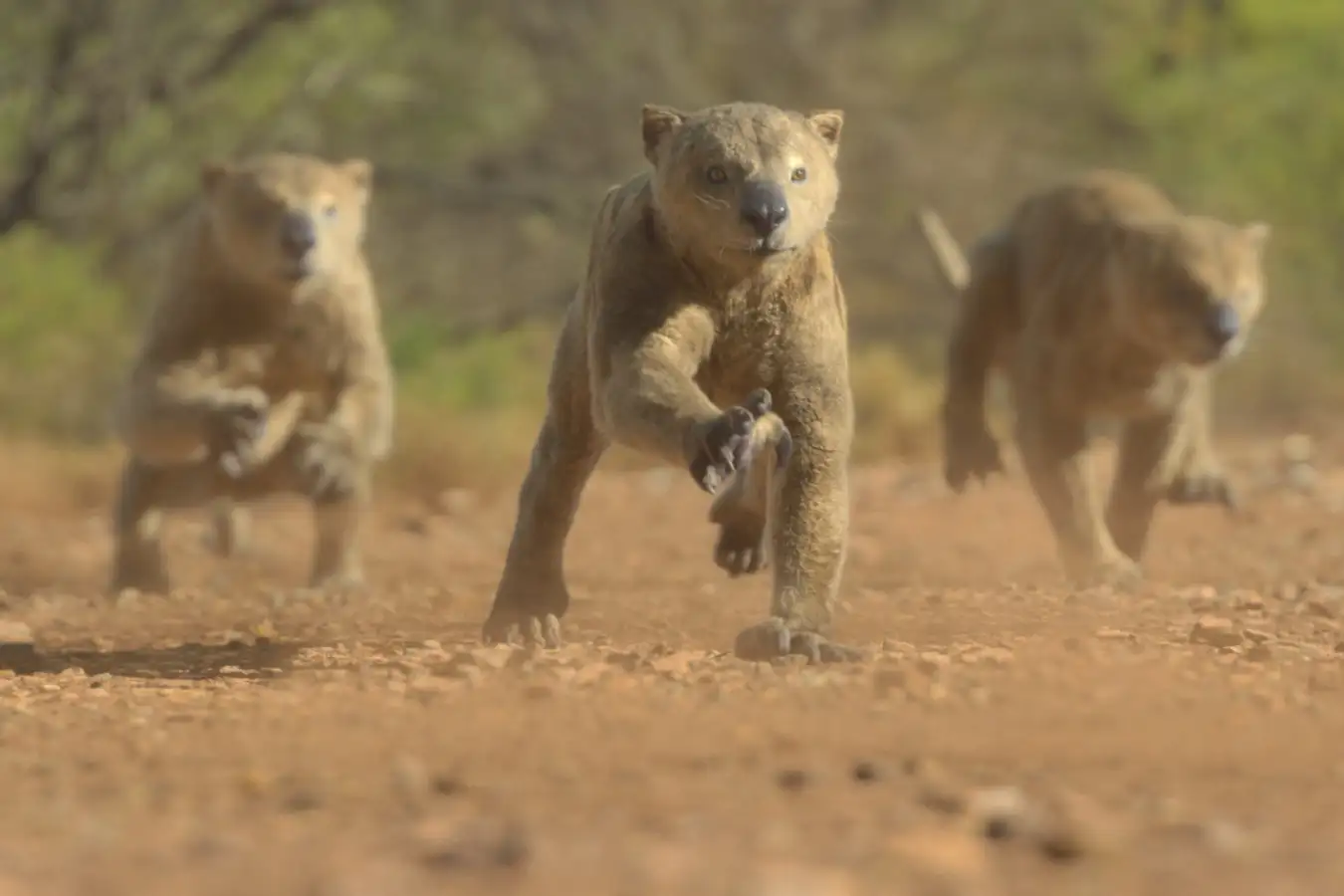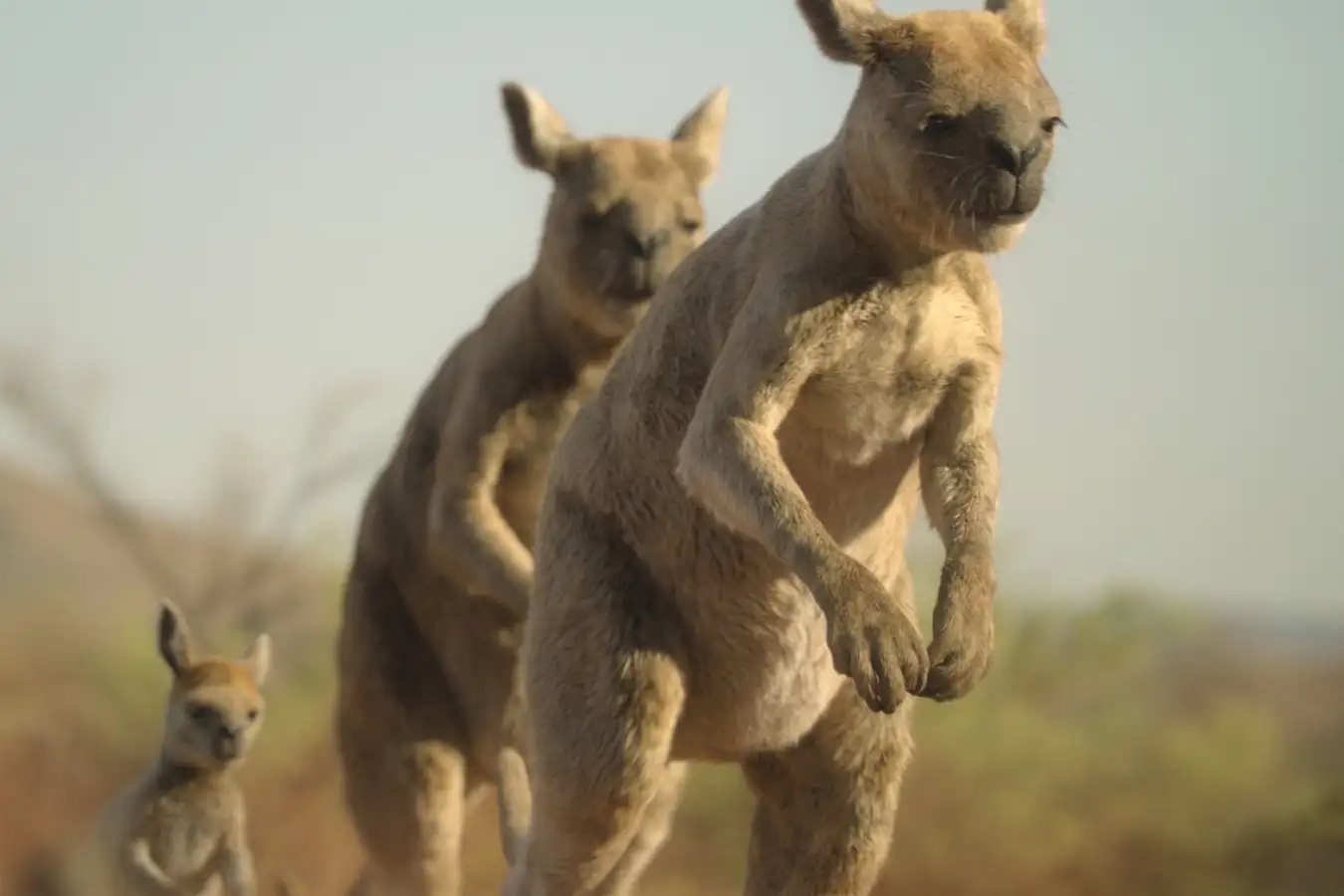
These “killer koalas”, or marsupial lions, are a highlight of the show
Apple TV
Back in 1999, the BBC’s Walking with Dinosaurs series spawned a new format: wildlife “documentaries” featuring long-extinct animals. I’m a big fan of this genre, and Prehistoric Planet: Ice Age, made by BBC Studios for Apple TV, is taking it to new heights.
The two earlier series of Prehistoric Planet brought dinosaurs back to life in amazing detail. Now, the third series focuses on the many extraordinary mammals that roamed the planet until very recently.
The visuals are simply astounding. If I didn’t know the animals on screen were extinct, I’m not sure I’d be able to tell whether this is actual footage, with the eyes in particular looking incredibly lifelike.
There were moments when the movements of some of the animals looked a little odd to me, but that’s it. As my highly critical son put it, “the only giveaway they are not real is how good they look”.
Palaeontologists who’ve seen the trailer also seem pretty impressed. The bottom line is, if you have any interest in extinct beasts, Prehistoric Planet: Ice Age is a must-watch.
The other thing I really like about it is that it isn’t just woolly mammoths running around in the snow trying to escape from sabre-toothed cats. Don’t worry, all the iconic ice-age beasts feature: giant sloths, woolly rhinos, giant armadillos, scimitar-toothed cats, Columbian mammoths and more.
But the series also looks at what was happening around the whole planet, not just the icy extremes, and features many lesser-known species, including some I’d never heard of. (The creature that this programme says was king of the beasts in Africa during the ice age came as a complete surprise to me.)

Procoptodon, a giant kangaroo, in Prehistoric Planet: Ice Age
Apple TV
Another highlight for me is the “killer koalas”, or marsupial lions (Thylacoleo). It was only earlier this month that a study came out showing that koalas are the closest living relatives of marsupial lions, so presumably the programme-makers knew of this finding in advance. Other Australian fauna, including the rhino-sized marsupial called Diprotodon, also make an appearance.

A woolly mammoth in Prehistoric Planet: Ice Age
Apple TV
There also are some nice lighter touches, including a sequence featuring a squirrel trying to eat a huge cannonball fruit, which must surely be a reference to the Ice Age animated film series.
I’m not sure about Tom Hiddleston taking over as narrator from David Attenborough. Hearing Loki’s voice was sometimes distracting.
There’s also a distinct lack of blood and gore, presumably with a younger audience in mind. I won’t go into detail so as not to spoil anything, but it did jar with me.
My main complaint, though, is that the bits at the end talking about the science are so short. I’d have liked to hear a lot more from the experts featured, especially about the evidence and thinking behind the behaviours that are depicted. I imagine most New Scientist readers will agree, but maybe that’s just us.
The first of these science bits also explains that there have been a long series of ice ages recently, but surprisingly makes no mention of carbon dioxide when explaining why. A decline in CO2 is what started this series of ice ages, and CO2 feedbacks also greatly amplified the effects of orbital variations.
Finally, look out for the dire wolves. I have written a lot this year about the claim that dire wolves have been brought back to life by making a few gene edits to grey wolves. One of the issues is that people have only ever seen fantasy versions of dire wolves, such as in the Game of Thrones TV series – I haven’t seen any high-quality artistic reconstructions of the real animal.
At last, though, we now have a science-based attempt to recreate what the extinct animals looked like in great detail – and, no, they aren’t just big white wolves. The head shape is distinctive, and their coats are brownish in this depiction.

A dire wolf in Prehistoric Planet: Ice Age
Apple TV
To me, bringing extinct animals back to life on the screen in this way is the only kind of de-extinction we should be attempting in the vast majority of cases. We’re bringing the long series of ice ages to an abrupt end, and sadly there is no longer a place on the planet for these extraordinary beasts.
Topics:
Source link : https://www.newscientist.com/article/2505369-extinct-animals-in-prehistoric-planet-ice-age-make-it-a-must-watch/?utm_campaign=RSS%7CNSNS&utm_source=NSNS&utm_medium=RSS&utm_content=home
Author :
Publish date : 2025-11-23 08:01:00
Copyright for syndicated content belongs to the linked Source.








